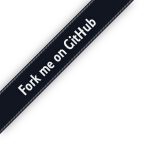数据结构—栈与队列
相关数据结构实现用go语言实现
相关代码做题合集:https://github.com/longpi1/algorithm-pattern
go 通过切片模拟栈和队列
栈 栈是一种后进先出(LIFO, Last-In-First-Out)的数据结构。Go 没有内置的栈类型,但可以使用切片或链表实现栈。
定义和特点
栈支持两种主要操作:
Push(入栈):将元素添加到栈顶。Pop(出栈):从栈顶移除并返回元素。
其他辅助操作包括检查栈是否为空、获取栈长度等。
1 2 3 4 5 6 7 8 9 10 切片模拟栈make ([]int ,0 )append (stack,10 )len (stack)-1 ]len (stack)-1 ]len (stack)==0
队列 队列是一种先进先出(FIFO, First-In-First-Out)的数据结构。Go 没有内置的队列类型,但可以使用切片或链表实现队列。
定义和特点
队列支持两种主要操作:
Enqueue(入队):将元素添加到队列尾部。Dequeue(出队):从队列头部移除并返回元素。
其他辅助操作包括检查队列是否为空、获取队列长度等。
1 2 3 4 5 6 7 8 9 make ([]int ,0 )append (queue,10 )0 ]1 :]len (queue)==0
相关练习题 20. 有效的括号
1 2 3 4 5 6 7 8 9 10 11 12 13 14 15 16 17 18 19 20 21 22 23 24 25 26 27 28 29 30 31 32 33 34 35 36 37 38 39 40 41 42 43 44 45 46 47 48 49 50 51 52 53 54 55 56 57 58 59 60 61 62 63 64 65 66 67 68 69 70 71 72 73 74 75 76 77 78 79 80 81 82 83 84 85 86 87 88 89 90 91 func isValid (s string ) bool {len (s)if n % 2 == 1 {return false map [rune ]rune {'(' : ')' ,'{' : '}' ,'[' : ']' ,var stack []rune for _, char := range s {if _, ok := m[char]; ok {append (stack, char)else {if len (stack) == 0 {return false len (stack)-1 ]if m[lastOpening] != char {return false len (stack)-1 ]return len (stack) == 0
232. 用栈实现队列
1 2 3 4 5 6 7 8 9 10 11 12 13 14 15 16 17 18 19 20 21 22 23 24 25 26 27 28 29 30 31 32 33 34 35 36 37 38 39 40 41 42 43 44 45 46 47 48 49 50 51 52 53 54 55 56 57 58 59 60 61 62 63 64 65 66 67 68 69 70 71 72 73 74 75 76 77 78 79 80 81 type MyQueue struct {int func Constructor () return MyQueue{in: make ([]int , 0 ), out: make ([]int , 0 )}func (this *MyQueue) int ) {for len (this.out) != 0 {len (this.out)-1 ]append (this.in, num)0 : len (this.out)-1 ]append (this.in, x)func (this *MyQueue) int {for len (this.in) != 0 {len (this.in)-1 ]append (this.out, num)0 : len (this.in)-1 ]len (this.out)-1 ]0 : len (this.out)-1 ]return resultfunc (this *MyQueue) int {for len (this.in) != 0 {len (this.in)-1 ]append (this.out, num)0 : len (this.in)-1 ]if len (this.out) == 0 {return -1 return this.out[len (this.out)-1 ]func (this *MyQueue) bool {return len (this.in) == 0 && len (this.out) == 0
225. 用队列实现栈
1 2 3 4 5 6 7 8 9 10 11 12 13 14 15 16 17 18 19 20 21 22 23 24 25 26 27 28 29 30 31 32 33 34 35 36 37 38 39 40 41 42 43 44 45 46 47 48 49 50 51 52 53 54 55 56 57 58 59 60 61 62 63 64 65 66 67 68 69 type MyStack struct {int func Constructor () return MyStack{queue1: make ([]int , 0 ), queue2: make ([]int , 0 )}func (this *MyStack) int ) {append (this.queue2, x)for len (this.queue1) != 0 {0 ]1 :]append (this.queue2, tmp)func (this *MyStack) int {0 ]1 :]return tmpfunc (this *MyStack) int {return this.queue1[0 ]func (this *MyStack) bool {return len (this.queue1) == 0
